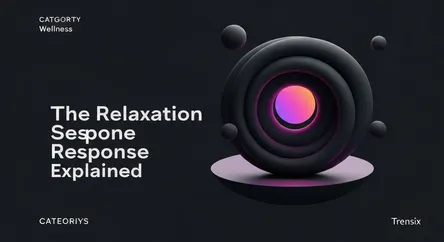Wellness
The Relaxation Response Explained

Discover the relaxation response, a state of deep rest that counteracts stress, slows your heart rate, and promotes physical and mental well-being.
What is it?
The relaxation response is the body's physiological state of deep rest, the direct opposite of the "fight-or-flight" stress response. Coined by Dr. Herbert Benson, it is an innate mechanism that can be voluntarily activated to counteract the harmful effects of stress. When triggered, it decreases heart rate, lowers blood pressure, slows breathing, and relaxes muscles. This state shifts the body from the sympathetic nervous system (which activates for emergencies) to the parasympathetic nervous system, which promotes calm and recovery. Techniques to elicit this response include meditation, deep abdominal breathing, progressive muscle relaxation, and yoga.
Why is it trending?
With rising awareness of chronic stress and its contribution to numerous health issues like anxiety, hypertension, and insomnia, people are actively seeking effective, non-pharmacological management tools. The relaxation response is trending because it offers a scientifically validated method for managing stress. Its popularization in wellness communities, corporate wellness programs, and healthcare settings has made it more mainstream. The focus on mind-body medicine and proactive health management has further boosted its relevance, presenting it as a practical skill anyone can learn to improve their overall well-being and resilience to life's pressures.
How does it affect people?
Regularly eliciting the relaxation response can have profound positive effects on health. Physiologically, it helps reduce the activity of stress hormones, ease muscle tension, improve digestion, and enhance sleep quality. Psychologically, individuals often report improved mood, clearer thinking, a greater sense of control, and reduced feelings of anxiety and frustration. Over the long term, practicing these techniques can help manage symptoms of various stress-related disorders, including chronic pain, heart disease, and gastrointestinal issues. It empowers people with a tool to actively participate in their own health and well-being.